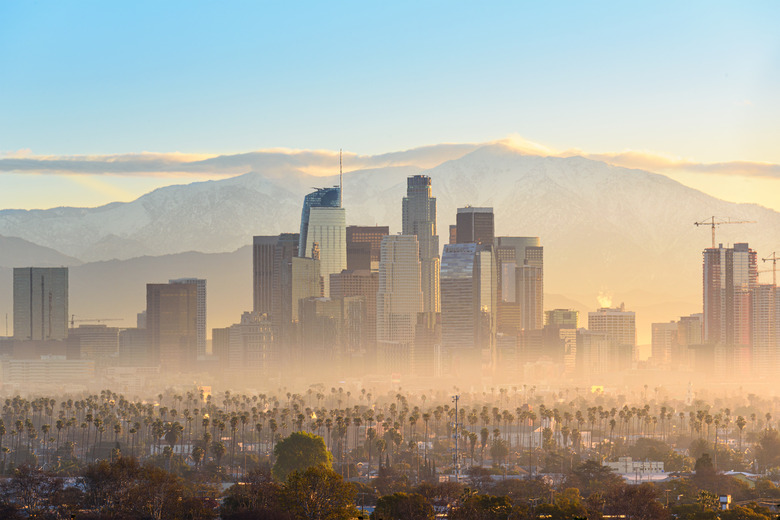What Is Industrial Smog?
Beijing set a record for poor air quality in 2014 when the level of particulate matter pollution in the city´s air reached 26 times the level determined to be safe by the World Health Organization. That day, the air took on a dusty, gray color and an acrid smell, and the city was covered in a layer of thick industrial smog.
Smog Defined
Smog Defined
There are two major types of smog: industrial, or classic, smog and photochemical smog. Classic smog forms in areas with high water vapor and high levels of sulfur emissions, usually from burning coal. Sulfur particles dissolve into water droplets to form sulfuric acid in the atmosphere, while coal soot darkens the skies. This type of smog is most commonly associated with London before the imposition of air quality rules in the 1950s.
Photochemical smog is actually a misnomer because it does not necessarily contain either smoke nor fog, according to Georgia Institute of Technology. It is usually the result of gasoline combustion and is best exemplified by cities like Los Angeles.
Industrial Smog Sources
Industrial Smog Sources
Coal-burning power plants and factors are by far the leading source of the chemicals that cause industrial smog, according to the Union of Concerned Scientists. A single coal power plant produces more than 7,000 tons of sulfur dioxide per year, even with state-of-the-art pollution control. Cars and trucks contribute to industrial smog, too, but much less. They are primarily responsible for photochemical smog.
Effects of Smog
Effects of Smog
Extreme cases of smog can directly cause people's deaths. The Great Smog of 1952 in London killed an estimated 4,000 people, and some news reports claimed it even asphyxiated cattle. Many more may have died in car accidents as a result of poor visibility, according to the United Kingdom´s Met Office.
Even minor smog events are harmful to human health, however. Smog is associated with all kinds of respiratory disease, from asthma to lung cancer. According to _The Guardian_, smog may contribute to the early deaths of 29,000 people per year in the U.K. alone.
The chemicals associated with smog, especially sulfur dioxide, also cause acid rain when they dissolve into water droplets in the atmosphere. Acid rain in turn damages crops and other plant life, the Union of Concerned Scientists explains.
Controlling Smog
Controlling Smog
Smokestacks at factories and power plants help to control industrial smog by releasing pollutants higher in the atmosphere. Stanford University reports that at higher altitudes winds carry away pollutants and prevent them from concentrating into smog. Smokestacks are not foolproof, however. The only reliable way to eliminate smog is to reduce industrial pollution.
Cite This Article
MLA
Robinson, Nick. "What Is Industrial Smog?" sciencing.com, https://www.sciencing.com/what-is-industrial-smog-13638919/. 17 September 2010.
APA
Robinson, Nick. (2010, September 17). What Is Industrial Smog?. sciencing.com. Retrieved from https://www.sciencing.com/what-is-industrial-smog-13638919/
Chicago
Robinson, Nick. What Is Industrial Smog? last modified March 24, 2022. https://www.sciencing.com/what-is-industrial-smog-13638919/
